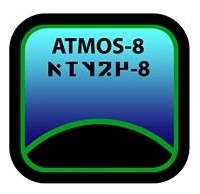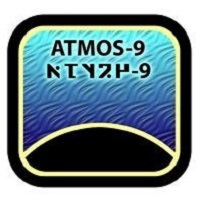Dense Atmosphere
A Dense Atmosphere is a type of atmosphere known for possessing a very high pressure, but is still breathable without assistance.
- However, many sophonts accustomed to standard atmospheres may breath with considerably more difficulty.
Description (Specifications)[edit]
Dense, High (D): These worlds have thick N2/O2 atmospheres, but their mean surface pressure is too high to support unprotected human life (high pressure nitrogen and oxygen are deadly to humans). However, pressure naturally decreases with increasing altitude, so if there are highlands at the right altitude the pressure may drop enough to support human life. Alternatively, there may not be any topography high enough for humans to inhabit, necessitating floating gravitic or dirigible habitats or sealed habitats on the surface. [1]
Surface Pressure & Water Properties[edit]
An atmosphere rated as Dense has a mean surface pressure ranging from 1.50 atm to 2.49 atm.
Surface Pressure & Water Properties Surface
pressureBoiling point
of water1.5 atm 111°C 2.0 atm 120°C 2.5 atm 127°C
History & Background (Dossier)[edit]
The greatest benefit of a dense atmosphere is the way in which it shields the surface from the effects of solar radiation (…which can make-up for a lack of magnetic field).
- When considering sophont habitation on a world with Atmosphere coding of 8 or 9, remember air resistance: vehicle speeds, including both aircraft and ground cars, will be reduced.
- Winds will pack far more punch, and building designs will reflect this. Skyscrapers might be quite rare and buildings may only be a couple of stories in height.
- Vegetation, likewise, will be low-growing, or evolve to counter the prodigious strength of the wind. [2]
References & Contributors (Sources)[edit]
- Marc Miller. Worlds and Adventures (Game Designers Workshop, 1977), 5.Marc Miller, Robert Eaglestone, Don McKinney. Worlds and Adventures (Far Future Enterprises, 2019), 5.
- J. Andrew Keith. Exotic Atmospheres (Game Designers Workshop, 1983), 1-16. (Special Supplement 2 from the periodical Journal of the Travellers' Aid Society 17)
- Marc Miller. Referee's Manual (Game Designers Workshop, 1987), 22.
- Geir Lanesskog. World Builder's Handbook (Mongoose Publishing, 2023), 64-68.Joe Fugate, J. Andrew Keith, Gary L. Thomas. World Builder's Handbook (Digest Group Publications, 1989), 64-68.
- Terrance McInnes, Dave Nilsen. World Tamer's Handbook (Game Designers Workshop, 1994), 11-17.
- Jon F. Zeigler. First In (Steve Jackson Games, 1999), 70,72.
- Paul Drye, Loren Wiseman, Jon F. Zeigler. Interstellar Wars (Steve Jackson Games, 2006), 125-6.
- Gareth Hanrahan. Core Rulebook (Mongoose Publishing, 2008), TBD.
- Marc Miller. T5 Core Rules (Far Future Enterprises, 2013), 409.
- Paul Elliott. The Universal World Profile (Zozer Games, 2016), TBD.
- Traveller Wiki Editorial Team
- Author & Contributor: Lord (Marquis) and Master of Sophontology Maksim-Smelchak of the Ministry of Science
- ↑ Gareth Hanrahan. Core Rulebook (Mongoose Publishing, 2008), 170.
- ↑ Paul Elliott. The Universal World Profile (Zozer Games, 2016), 15.

